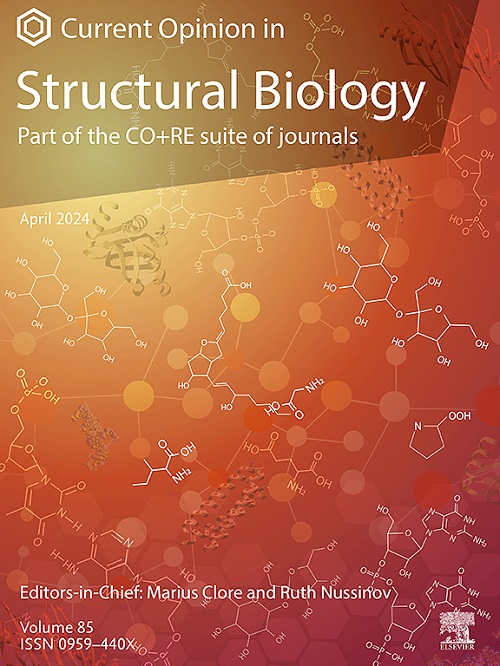Prediction of nucleic acid binding residues in protein sequences: Recent advances and future prospects
IF 6.1
2区 生物学
Q1 BIOCHEMISTRY & MOLECULAR BIOLOGY
引用次数: 0
Abstract
Computational prediction of DNA-binding residues (DBRs) and the RNA-binding residues (RBRs) in protein sequences is an active area of research, with about 90 predictors and 20 that were published over the last two years. The new predictors rely on sophisticated deep neural networks and protein language models, produce accurate predictions, and are conveniently available as code and/or web servers. However, we identified shortage of tools that predict these interactions in intrinsically disordered regions and tools capable of predicting residues that interact with specific RNA and DNA types. Moreover, cross-predictions between RBRs and DBRs should be quantified and minimized to ensure that future tools accurately differentiate between these two distinct types of nucleic acids.
蛋白质序列中核酸结合残基的预测:最新进展和未来展望
蛋白质序列中dna结合残基(DBRs)和rna结合残基(RBRs)的计算预测是一个活跃的研究领域,在过去的两年中,大约有90种预测方法和20种预测方法被发表。新的预测器依赖于复杂的深度神经网络和蛋白质语言模型,产生准确的预测,并且可以方便地作为代码和/或web服务器使用。然而,我们发现缺乏预测内在无序区域中这些相互作用的工具,以及能够预测与特定RNA和DNA类型相互作用的残基的工具。此外,应该对rbr和dbr之间的交叉预测进行量化和最小化,以确保未来的工具能够准确区分这两种不同类型的核酸。
本文章由计算机程序翻译,如有差异,请以英文原文为准。
求助全文
约1分钟内获得全文
求助全文
来源期刊

Current opinion in structural biology
生物-生化与分子生物学
CiteScore
12.20
自引率
2.90%
发文量
179
审稿时长
6-12 weeks
期刊介绍:
Current Opinion in Structural Biology (COSB) aims to stimulate scientifically grounded, interdisciplinary, multi-scale debate and exchange of ideas. It contains polished, concise and timely reviews and opinions, with particular emphasis on those articles published in the past two years. In addition to describing recent trends, the authors are encouraged to give their subjective opinion of the topics discussed.
In COSB, we help the reader by providing in a systematic manner:
1. The views of experts on current advances in their field in a clear and readable form.
2. Evaluations of the most interesting papers, annotated by experts, from the great wealth of original publications.
[...]
The subject of Structural Biology is divided into twelve themed sections, each of which is reviewed once a year. Each issue contains two sections, and the amount of space devoted to each section is related to its importance.
-Folding and Binding-
Nucleic acids and their protein complexes-
Macromolecular Machines-
Theory and Simulation-
Sequences and Topology-
New constructs and expression of proteins-
Membranes-
Engineering and Design-
Carbohydrate-protein interactions and glycosylation-
Biophysical and molecular biological methods-
Multi-protein assemblies in signalling-
Catalysis and Regulation
 求助内容:
求助内容: 应助结果提醒方式:
应助结果提醒方式:


